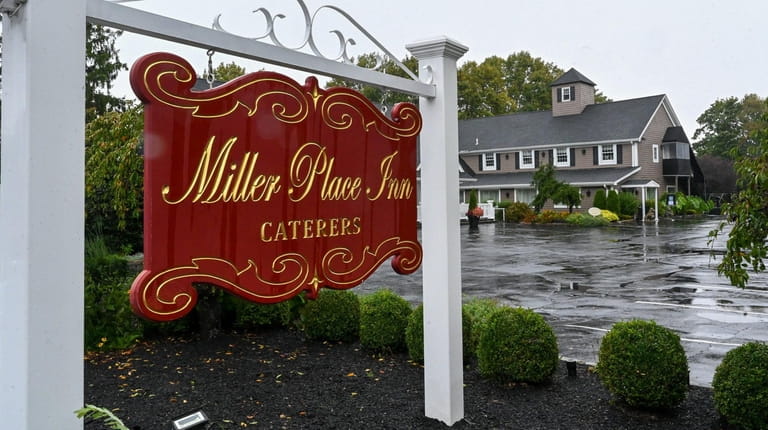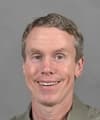Key to New York's low positivity rates? Counties, state credit contact tracers

Days after a Sept. 25 party in Miller Place, Suffolk County COVID-19 investigators began noticing a pattern — one person who had tested positive for the coronavirus reported attending the Sweet 16 party, and then another, and another.
"We were able to find out who hosted the party and contact the party hostess, who then very willingly gave us a list of who was at the party," said Lauren Barlow, Suffolk’s chief of epidemiology and disease control.
That led to hundreds of phone calls to party attendees and to people with whom those who tested positive had close contact after the event — and it may have helped prevent the spread of the virus to vulnerable populations, Suffolk Health Commissioner Gregson Pigott said.
State and county officials say the labor-intensive effort to try to reach everyone in New York State who tests positive for the coronavirus — more than a half-million people statewide have to date — and then call hundreds of thousands of close contacts, isolating those who test positive and quarantining their contacts, has helped keep the state’s test-positivity rate among the nation’s lowest.
"I don’t think there’s any doubt whatsoever" that the process has saved lives, said Dr. Lawrence Eisenstein, Nassau County’s health commissioner. "If people become contagious and are quarantined at home instead of at work or at school or at social events or wherever, they’re not spreading it."
Ultimately, 29 of the 81 guests at the party at the Miller Place Inn tested positive, as did eight people who lived with attendees and a close friend of a guest. It was Suffolk’s biggest COVID-19 outbreak, County Executive Steve Bellone said. The county put all those who tested positive in mandatory isolation, meaning they were to stay away from others, even in their homes, and 334 others in obligatory at-home quarantine.
Pigott credits the quick and extensive investigation and contact tracing with stopping the spread of the virus beyond the guests and several of their close contacts.

A Sweet 16 party at the Miller Place Inn on Sept. 25 was considered a "superspreader" event after dozens of people tied to the celebration tested positive for COVID-19. Credit: James Carbone
"For this situation, the system definitely worked," he said. "Because we got on top of it when we did, I believe we prevented a larger outbreak."
'A pipeline' of investigators
Between Nassau and Suffolk, there are more than 150 people who conduct COVID-19 investigations, some full time, some combined with other jobs, with those experienced in communicable diseases supplemented by newly trained county employees and some newly hired employees, officials said.
Investigators are able to reach about 90% of those on Long Island and statewide who test positive, said Larry Schwartz, a former secretary to the governor and former deputy county executive in Suffolk who was appointed by Gov. Andrew M. Cuomo to build a state contact-tracing program with Bloomberg Philanthropies.
Schwartz said that percentage was "higher than any other state." The nonprofit, expert-run website Covid Act Now says New York is the only state with a full complement of contact tracers.
Anyone who tests positive has identifying information reported to the state, which sends that information to the counties — although Schwartz acknowledged some may supply false phone numbers or addresses.
For those who are located, there are potential fines of up to $10,000 for violating isolation and quarantine orders, and for refusing to supply contacts, Schwartz said. Nassau and Suffolk officials said a small number of people initially would not cooperate, but did so after being warned of potential legal action.
Case numbers in New York have been rising in recent days, and even though the positivity rate is still among the lowest in the country, it is higher than a few weeks ago.
County officials said they could quickly shift people already trained to do disease investigation back to COVID-19 duties if there is a surge in cases. The state, which has hired more than 2,100 contact tracers since May, has a list of 6,000 additional people "on standby" who passed a contact-tracing test and could be hired quickly, Schwartz said.
"We have a pipeline of people ready to go," he said.
There have been other outbreaks on Long Island in addition to the one in Miller Place.
Bellone said at a Wednesday news conference that Suffolk isolated all 30 guests who tested positive from a wedding Oct. 17 in Cutchogue, and 26 people from an Oct. 17 Bellport birthday party who contracted the virus, as well as put 291 close contacts under mandatory quarantine.
In addition, he said, the health department is on the lookout for possible infections resulting from a party of up to 300 people in Farmingville on Oct. 24. If anyone from the party tests positive, "They will launch a comprehensive case and contact tracing operation," he said.
The Sweet 16 party
Suffolk has supervisory case investigators who review all reports of interviews with people who test positive. With the Miller Place case, when investigators saw that more than one person who tested positive attended the Sweet 16 party, "right away, that is an alert for us to look into it more carefully," Barlow said.
After the party hostess handed over the list of attendees, state contact tracers went one-by-one through the list of 81 guests — 31 people more than legally allowed under state COVID-19 regulations — and called all who hadn’t yet tested positive, health department officials said. Schools of those at the party were alerted.
Christopher Regina, a co-owner of Miller Place Inn, which the state fined $10,000 for alleged violations of COVID-19 executive orders, said he had been unaware of the 50-person limit.
The isolation and quarantine orders, and notification of schools, helped control the spread of the virus, Barlow said.
"Some of them were in quarantine before they became positive," she said, noting how some party guests tested negative initially and later tested positive, because the virus takes days to show up on tests. "They were already at home excluded."
Suffolk sent the list of contacts of those who tested positive to the state, said Ryan Attard, assistant to the health commissioner. The county issued quarantine orders, but state contact tracers called those contacts and checked up on them every day, including to ask if they were experiencing COVID-19 symptoms, she said. Once someone started having symptoms or tested positive, the Suffolk health department took over daily monitoring, she said.
Investigators are not aware of anyone who was ill while at the party, which makes it more difficult to determine if just one person had arrived at the party carrying the virus, or whether multiple people were already infected, Barlow said.
"I’m not sure we’ll ever find out," she said.
Pandemic's scale required larger effort
Disease investigations and contact tracing are not unique to COVID-19. Health departments statewide long have been isolating people with measles, meningitis and other communicable diseases and quarantining their close contacts.
In early March, when the first COVID-19 cases were confirmed on Long Island, the county health departments handled those instances.
Then, the number of cases began skyrocketing.
"Starting in the third week of March, we were getting hundreds of cases a day," Pigott said. "At that point, we couldn't do full case investigations and contact tracing."
Suffolk shifted employees from other duties to disease investigation and contact tracing, but the health department still couldn’t keep up, so the focus was on reaching people who tested positive and asking them to reach out to their close contacts and advise them to quarantine, Barlow said.
Other county health departments around the state also were overwhelmed, and state officials realized that counties needed help, Schwartz said.
"Because of the volume and scale of this pandemic, it towered over any other infectious disease that local governments and the state were dealing with in the past," Schwartz said. "We needed to have a much bigger program."
He said the program launched May 15, and of the more than 2,100 contact tracers, 794 focus on Long Island.
Schwartz said that, under the system, county health departments typically do the contact tracing "unless the volume of contacts is so great that they ask the state to work with them and do some of the tracing with them and for them."
But Nassau and Suffolk health officials said that while their departments communicate with and monitor people who test positive, the state is responsible for calling their contacts, with some exceptions such as, Eisenstein said, more complicated cases or, Attard said, when contacts cannot be reached by phone and an in-person visit is needed.

